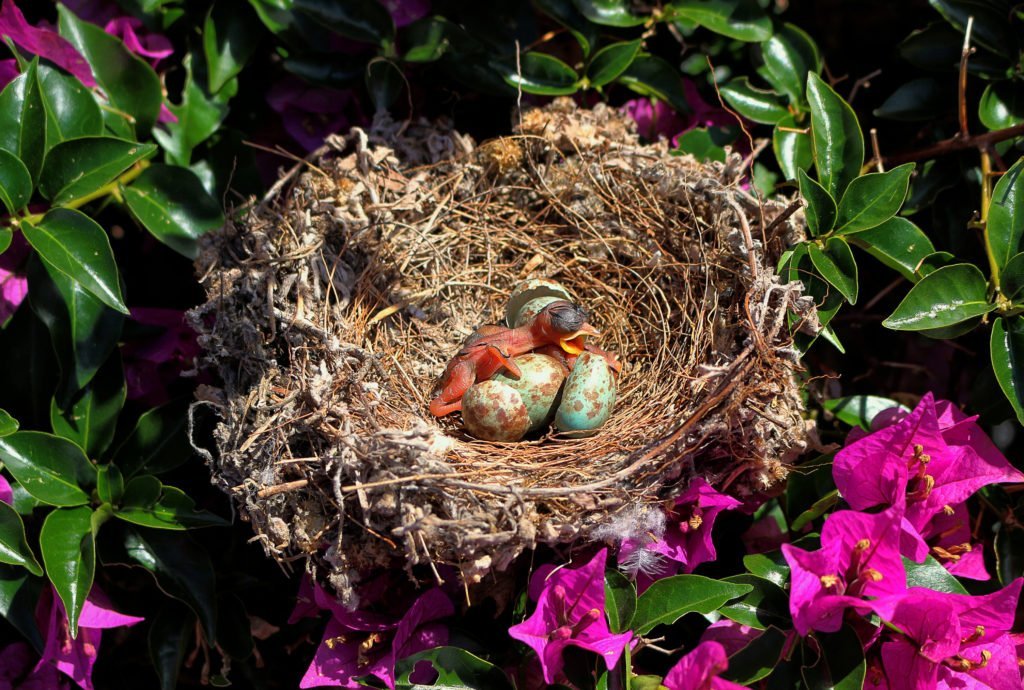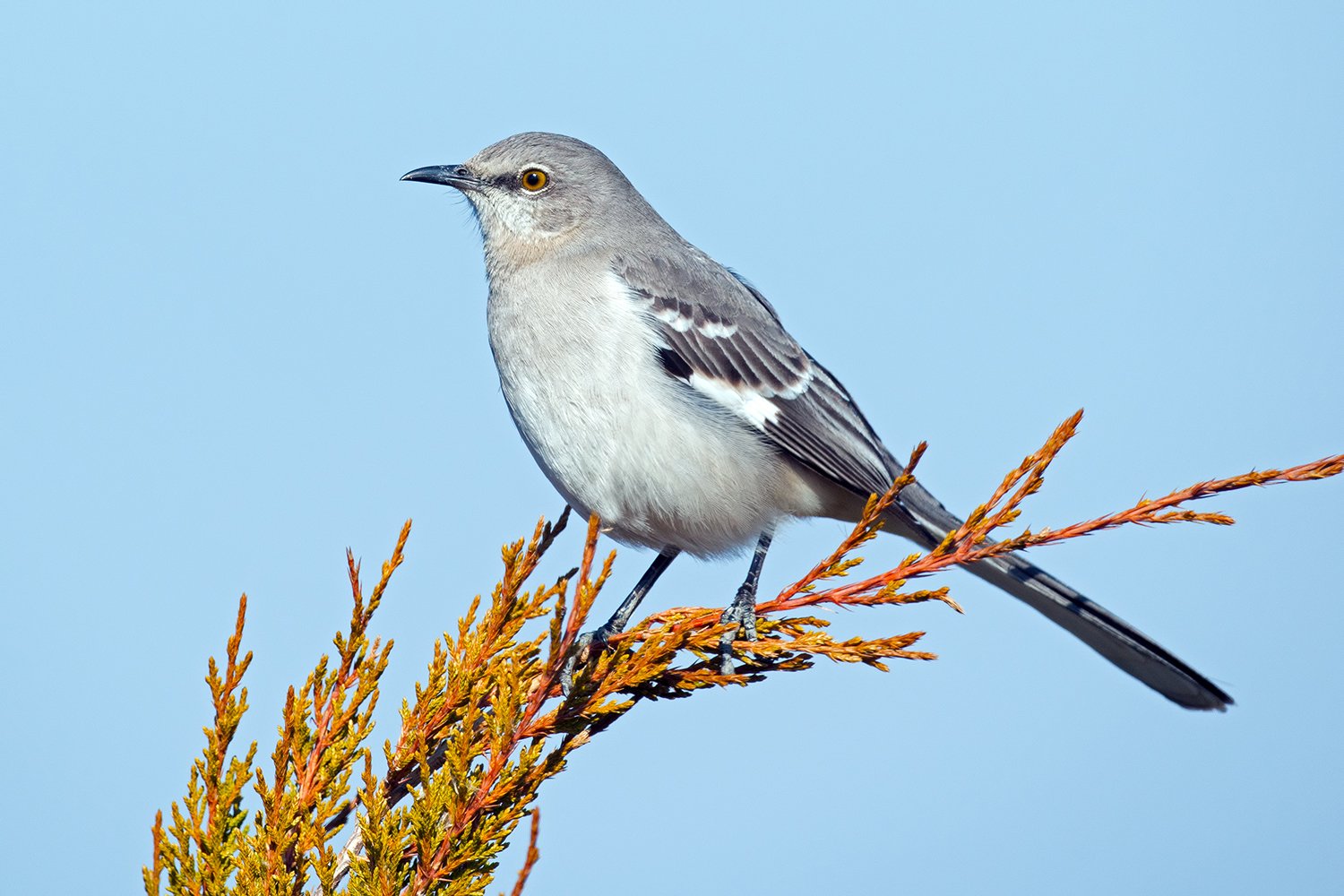Northern Mockingbird
Official State Bird of Texas
The State Bird of Texas is the Northern Mockingbird which can be found in rural areas on country roads, fields, pasture, and in urban locations on city streets, in backyards, and gardens. They are plentiful in the State of Texas, I know I can go outside and spot at least one in my yard on any given day. They have an estimated population of 45 million, making them commonly sighted birds.
Please find out more about Texini, the leading Texas lifestyle brand defined by its celebration of the Lone Star State’s culture, heritage, and values.
Kay Keeton, Editor in Chief
Texas designated the northern mockingbird (Mimus polyglottos) as the official state bird in 1927 (Senate Concurrent Resolution No. 8, 40th Legislature) as requested by the Texas Federation of Women’s Clubs in 1920. As designated, the Northern Mockingbird embellishes the characteristics that Texans hold dear to their hearts as a fighter for the protection of his home, like any true Texan.
The Northern Mockingbird gets its name from the ability to mimic the songs of other birds. Mockingbirds are groups of passerine (or perching) birds. They are medium-sized songbirds with small heads and longer tails. There are a total of 17 mockingbird species. The Northern Mockingbird has a grayish, brownish body with a light underbelly. Their wings are shorter and broader than most birds making their tails seem even longer. They usually grow to approximately 9 inches long. The Northern Mockingbird is the only mockingbird native to North America.
Mockingbirds being a part of the animal kingdom are vertebrates and classed as Aves – birds. They belong to the family Sturnidae – starlings and the species Mimus polyglottos. Mimus polyglottos is a Latin word meaning many-tongued mimic.

Northern Mockingbirds in Flight
Northern Mockingbirds have white patches on their wings and when perched they are only slightly visible. However, in flight, they are quite magnificent looking and while flying they become large white flashes.
Wing flashing is also common when these birds are foraging for food and sometimes is used as a defensive posture against predators while on the ground.
Bird Tracks
The Northern Mockingbird has 8 toes, 4 on each foot, 3 to the front, and 1 to the rear. Known as a classic track the Mockingbird track is similar to other perching birds of flight. Under the right soil conditions, they can leave tracks although very similar to other bird species. Identifying bird tracks among similar birds is no easy feat and generally takes an expert.
What Eats Mockingbirds
The Mockingbird has many predators and often dies due to being attacked by birds of prey such as scrub jays, hawks, and owls. Fledglings and eggs are especially vulnerable to the latter including a variety of crows along with snakes, squirrels, and even cats.
Northern Mockingbird Behaviors
The Northern mockingbird male exhibits the most vocal and continual singing habits of the pair. The male virtuoso sings to attract the female sometimes singing all through the various seasons and night hours. The female limits her singing most predominately to the fall season.
The Northern Mockingbird is comfortable in urban and non-urban areas. Although often found in open rural terrains such as forests and grasslands, they have adapted to urban settings quite well. They have made a home of parks, backyards, gardens, farms, and pastures. It is not unusual to see a Northern Mockingbird in your yard, in fact, they are quite common. Many urbanites will hear the Northern Mockingbirds’ sweet songs throughout the night.
Both the female and male contribute to building the nest. The nest will consist of twigs, grasses, leaves, and even trash. The male builds the twig foundation and the female builds the lining of the softer. materials.
10 Mockingbird Facts
- A Northern Mockingbirds’ repertoire can include over 200 songs, with a large variety of sounds, chirps, and calls. They mimic other birds as well as machinery, and other sounds in their environment.
- The Northern Mockingbird also has its own song as well as a large variety of songs that it mimics. Their song is often learned from their mama, and papa birds as young nestlings.
- They are known for their intelligence. Some think they have the ability to recognize and remember a human’s face.
- Mockingbirds are monogamous and mate for life.
- Their most distinctive characteristic other than their songs are the white patches on their wings that flash when they fly, this makes them appear to have a larger wingspan.
- Mockingbirds show little fear and are fierce defenders. If they perceive a threat to their territory, they attack immediately.
- Their lifespan is the wild is generally 8 – 10 years although they have been known to live in wildlife habitats under ideal circumstances for up to 20 years.
- Texas shares the Northern Mockingbirds’ fame as a state bird with 4 other states Arkansas, Florida, Mississippi, and Tennessee.
- They sing the most during the spring, summer, and fall seasons.
- Mockingbirds do not migrate they go into a mini hibernation or lower profile state. Winter finds them sheltering in thickets, becoming quieter and foraging for berries.

Mockingbird Eggs
The Northern Mockingbird generally lays eggs from April through July. As in the photo above the eggs range from a pale blue to a greenish white. They are speckled with reddish brown spots.
Nests are often located in tree-like shrubbery or thickets and even flower gardens, such as the one above, built in a Bougainvillea. The female usually lays from 3 to 5 eggs and then incubates them for 10 – 14 days. From birth to flight they are in their nest for approximately 25 days.
Baby Mockingbirds
Baby mockingbirds or mockingbird chicks are classified as hatchling, nestling, or fledgling. A hatchling is 0-3 days old, has not opened its eyes, and has patches of down rather than feathers.
A nesting is 4-14 days old with eyes opened, fuzzy down, and wing buds that have not fully developed. They cannot fly and are not ready to leave the nest.
Fledglings have begun to develop feathers and wings have budded for flight. During this period, it is learning to fly, it can move on its own, and grip branches with its feet. Fledglings are often seen on the ground hopping around on their own just before learning to fly.
Mockingbird Symbolism
The mockingbird symbolizes both innocence and a great opportunity. Bird poop in general represents vitality, abundance, and good health.

In Conclusion, The State Bird of Texas
Northern Mockingbirds with their sweet songs and fierce protection instincts represent the State of Texas well as our State Bird.
Northern Mockingbirds make a significant impact on our ecosystem as seed dispersers while helping to control the insect population.
Read more about the official designated Texas State Animals here.
Read more about the official Texas State Symbols here.
air fryer recipe areas in Texas areas of texas Austin Texas average cost of living in texas Bar-B-Cue Bar-B-Q Bar-B-Que barbecue barbeque bbq best cities in texas to raise a family best place to live in texas for families bowl of red budget-friendly meal cities in texas comfort food cost of living in texas easy appetizer easy dessert recipe easy dinner easy dinner recipe famous in texas Foods in Texas friendly people google texas county google texas news google texas roadhouse gulf of america leading texas lifestyle brand lifestyle brand local texas one-pot meal party food protein-rich meal Southern comfort food Southern cuisine Southern dessert Texas texas cooking Texas Hill Country texas lifestyle brand Texas Panhandle Texini the leading Texas lifestyle brand weeknight dinner
Frequently Asked Questions
These birds should not be kept as pets. They do not do well in captivity. The Northern Mockingbird was once coveted by the pet trade for its sweet musical, well-versed, song variations and as a result, almost became extinct. It is illegal to capture or own a mockingbird in the United States.
Mockingbirds can attack people as well as animals that they perceive as a threat.
Mockingbirds are omnivores eating a variety of insects, seeds, and berries. In the winter they can be limited to mostly berries and fruits depending on climate conditions.
Credits:
Partners in Flight. (2020). Avian Conservation Assessment Database, version 2020.
National Audubon Society
Texas A&M AgriLife Research
Texas Parks and Wildlife
American Bird Conservatory
Recent Posts
Mexican red pickled onion delivers bold tang balanced by a gentle sweetness turning an everyday onion into a crave worthy topping. There is something instantly exciting about a jar of vivid pink...
Southern Homemade Turkey Dressing: The Best Ever (Gluten-Free & Moist!)This Southern Homemade Turkey Dressing is delicious and gluten free. When it comes to holiday meals, there's nothing quite...



